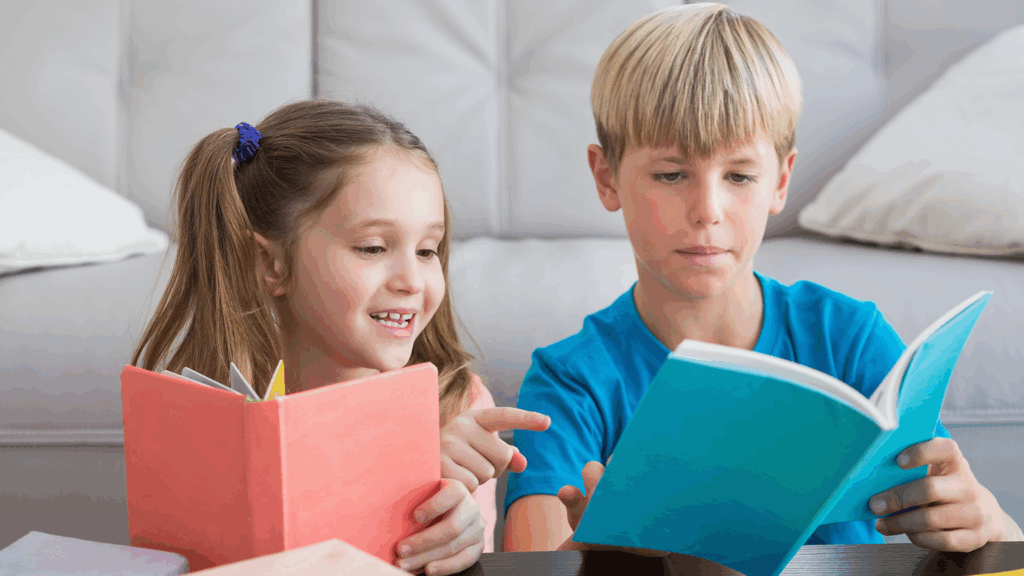
Textbooks rarely spark a lifelong love for learning. They check boxes and deliver facts without feeling. However, real learning—the kind that sticks and shapes how students view the world—needs more than that. It requires connection, curiosity, and a story.
That’s why a literature-based homeschool curriculum stands apart. It builds education around great books instead of dry instruction. Stories become the centerpiece, not the sideshow. Students can look into narratives that reflect real history, authentic cultures, real struggles, and absolute joy.
Students learn history by examining actual events, practice language using it in context, and study science by applying it through hands-on exploration.
Education should feel like something more than memorizing dates or defining vocabulary words. It should engage the mind and stir the heart. A literature-based homeschool curriculum doesn’t separate facts from feelings. It unites them into a model that drives comprehension, critical thinking, and long-term retention.
What a Literature-Based Homeschool Curriculum Looks Like
You don’t teach from a scripted textbook in a literature-based homeschool curriculum. You teach through living books—books written by people with passion and expertise who pull students into the subject through well-told narratives. These books can be fiction or nonfiction. They can explore history, science, art, or character development. However, what makes them powerful is how they connect readers to the subject.
Reading isn’t an isolated activity here. It’s the foundation of the entire school day. You read together, or independently, then talk about the story’s meaning. You ask questions, and also let the student ask questions. The discussion often flows into writing, journaling, critical analysis, or creative assignments that reinforce the subject.
For example, if you’re studying the Vikings, your student may read a historical fiction book set in that era. That reading becomes the launch point for mapping geography, studying the time period, exploring related science topics like navigation or climate, and writing journal entries from a Viking child’s perspective. Just like that, one book becomes an entire lesson across multiple subjects.
This method integrates subjects naturally. Students understand what they’re learning and why it matters—and how it fits into a broader understanding of the world.
Why Literature-Based Learning Creates Lasting Knowledge
Students retain what they connect with. A worksheet filled with dates and names might check off an academic standard, but it won’t linger in the memory like a story about a character living through those events. Literature provides context, emotion, and sequence: all things that help ideas take root.
Children are naturally drawn to stories—they use them to make sense of the world. When learning begins with a story, education feels more like an experience than a chore. Instead of memorizing isolated details, students engage with full ideas. They explore themes, motivations, and consequences. Along the way, they form opinions and start asking tough questions.
This method teaches students how to think. Students develop strong reading and writing skills through repeated exposure to language, structure, and literary devices. They learn to analyze tone, character, plot, and symbolism. They notice how authors build arguments and how words influence understanding. After a while, these skills translate directly into stronger writing.
When needed, focused support like targeted grammar review strengthens specific skills without pulling students away from the core literature experience. That flexibility is key. It allows students to stay immersed in the story while still mastering writing mechanics.
The Benefits of Teaching Through Living Books
Literature-based homeschool education changes the way families approach school. It simplifies the day, extends the learning, and opens space for meaningful conversation.
Reading together becomes a shared experience. Siblings listen in, parents stay involved, and learning shifts from a checklist to a meaningful connection. Families often notice stronger bonds, more engaged kids, and school days that feel more joyful.
Traditional models often isolate each subject—students work on math in one workbook, language arts in another, and history in a third. That separation creates a disjointed learning experience. When reading becomes the common thread, students move through topics with purpose. They recognize how ideas connect and understand how history, literature, science, and faith speak to one another.
This model adapts easily to different ages and skill levels. Great books aren’t tied to a single grade—young children follow the plot while older ones explore deeper themes. Everyone engages at their level, which makes it easier for parents to teach multiple children without managing separate curricula for every subject.
Literature-based learners often read more, write better, and engage more deeply. Their regular exposure to vocabulary, sentence structure, and storytelling gives them a strong foundation for academics and life.
A Model Rooted in Real Academic Excellence
Some assume that using literature to teach means sacrificing rigor. However, the opposite is true. This model is highly academic. It sharpens reading comprehension, boosts writing fluency, and builds foundational skills across subjects.
Families using literature-based programs often share stories of children waking up early for school, not because they have to, but because they’re excited to discover what happens next in the book. Some kids even skip Christmas presents just to hear another chapter. That level of engagement comes from stories that matter.
Students who once struggled with reading often begin to enjoy it. Parents who thought they weren’t “teachers” find themselves leading powerful conversations about ethics, empathy, and worldview. Over time, academic growth becomes obvious through curiosity, retention, and confidence.
Learning Through Story Builds More Than Academic Strength
Literature-based education develops readers, writers, and thinkers. When students read widely and often, they encounter different perspectives. They meet people unlike themselves. They explore cultures, beliefs, and ideas they might never come across in a textbook.
That approach builds empathy and sharpens critical thinking. It teaches students to engage with the world, question information, test ideas, and truly understand what they learn.
It also develops a strong sense of voice. Students who read quality literature often write with more confidence and precision. They recognize what effective communication sounds like because they’ve absorbed rhythm, style, and tone through reading. When given the chance to write about what they’ve read, they easily apply those skills.
This doesn’t happen overnight. It takes consistency, regular exposure, and the steady influence of story. With the right tools, parents can guide this process clearly and confidently.
Why This Method Continues to Grow
More families are choosing literature-based homeschooling because it works, adapts, and fosters the learning that lasts long after the school year ends.
It simplifies the daily routine by allowing subjects to overlap and build on each other. This style of learning sparks interest, even in reluctant learners. It removes the pressure of constant testing and replaces it with consistent reflection. Most importantly, it teaches students to love learning for its own sake.
It’s a proven path that works for a wide range of learners. It provides academic structure without rigidity. It allows students to move at their own pace. It also lets parents stay involved in natural, not forced ways.
We know from experience how effective this model can be, because we’ve built our entire curriculum around it.
Literature-Based Homeschool Curriculum Supports a Lifelong Love of Learning
One of the most powerful outcomes of a literature-based homeschool curriculum is the way it fosters an internal drive to keep learning, even outside school hours. Students who experience learning through powerful storytelling don’t see school as a task to complete. They begin to see it as an ongoing journey filled with discovery, challenge, and personal growth.
Because the stories used in this model often deal with actual historical events, scientific breakthroughs, or moral dilemmas, they naturally open up space for curiosity. A story about a pioneer family on the American frontier might spark interest in westward expansion, agriculture, or Native American history. A book about a young scientist could turn into a rabbit trail on chemistry, astronomy, or invention.
In this model, education doesn’t end when the book closes. It continues around the dinner table, during a walk outside, or on a trip to the library. That’s what real education should do—open the door for more profound, lasting engagement beyond the curriculum.
How We Bring Literature-Based Homeschooling to Life
At Essentials in Writing, we believe every student can write well and think clearly. That’s why our curriculum walks students through it step-by-step. We teach directly to the student, so parents don’t need formal training to guide the process. Our bite-sized lessons keep learning focused. Our certified educators demonstrate every concept on screen, modeling new material and reviewing content so students know exactly how to apply what they’ve learned.
Because we separate writing from literature, students can build each skill with precision. Our writing program lays the foundation, while our literature curriculum gives students the tools to read deeply, think critically, and write clearly about what they’ve read.
This structure keeps students engaged and gives parents flexibility. It allows for natural conversation without overwhelming your schedule. It’s real education is made practical for real families.
If you’re looking for a way to make learning meaningful again: a method that invites conversation, builds confidence, and teaches students how to think, then literature-based homeschooling is the right fit. Join us today, we’re here to help you get started.




